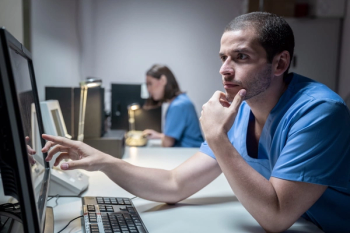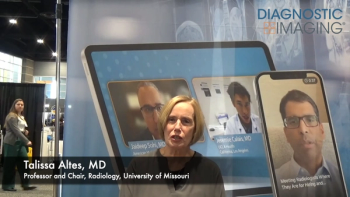
During Normal Scrolling, Clinically Relevant Images Can Be Skipped
Images can be skipped with monitors with refresh rates of both 60 Hz and 120 Hz.
Given the advancements in CT, each patient scan can include thousands of individual images. It’s nearly impossible to examine them all, and radiologists must keep in mind that they’re not necessarily seeing everything when they read studies.
In a poster presented during the Society for Imaging Informatics in Medicine (SIIM) 2021 Virtual Annual Meeting, Fletcher Moore, M.D., a diagnostic radiologist with the University of Maryland Medical System showed the frequency at which images are skipped during an average interpretation.
“Images are imperceptibly skipped during normal scroll operation on thin slice CT under experimental conditions,” he said. “Skipped images may contain clinically significant information that could impact patient outcomes. Radiologists should be aware of this possibility.”
For more SIIM 2021 coverage, click
Based on his analysis, the thinner the CT slice, the more images are skipped.
Many PACS viewers do have a default image stack scroll feature in place, he said. To determine the amount of images skipped during a normal scroll operation and how it relates to monitor refresh rate and slice thickness, he and his colleagues examined screen capture data, slow-motion video, and optical character recognition (OCR).
The team recorded a radiologist scrolling through 5-mm or 1-mm slices of publicly available chest CT scans using the RadiAnt DICOM viewer set to either 120 Hz or 60 Hz. They extracted the current image number from the video on a per-frame basis with OCR and analyzed that dataset to determine the frequency of image skips. They compared the skip rates to the Student t-test.
Based on their analysis, no image skips occurred during 5-mm slice scrolling. But, when they examined 1-mm slice scrolling at a 60 Hz monitor refresh rate, they saw that 1.13 percent of images were skipped. It increased to 1.17 percent for 1-mm slice at 120 Hz. The Student t-test revealed no statistically significant difference between the skip rates. In addition, they determined the OCR error rate on screen-captured data was less than 1 percent, and it was roughly 5 percent on slow-motion video.
Given that the monitor refresh rate did not have a significant impact on results, Moore’s team said the outcome points to a computer hardware or software limitation on frame rate.
For more coverage based on industry expert insights and research, subscribe to the Diagnostic Imaging e-Newsletter
Newsletter
Stay at the forefront of radiology with the Diagnostic Imaging newsletter, delivering the latest news, clinical insights, and imaging advancements for today’s radiologists.




























